How long do sunflowers take to grow? Gardening experts reveal when you can expect their sunny blooms to appear
How patient you need to be post-planting
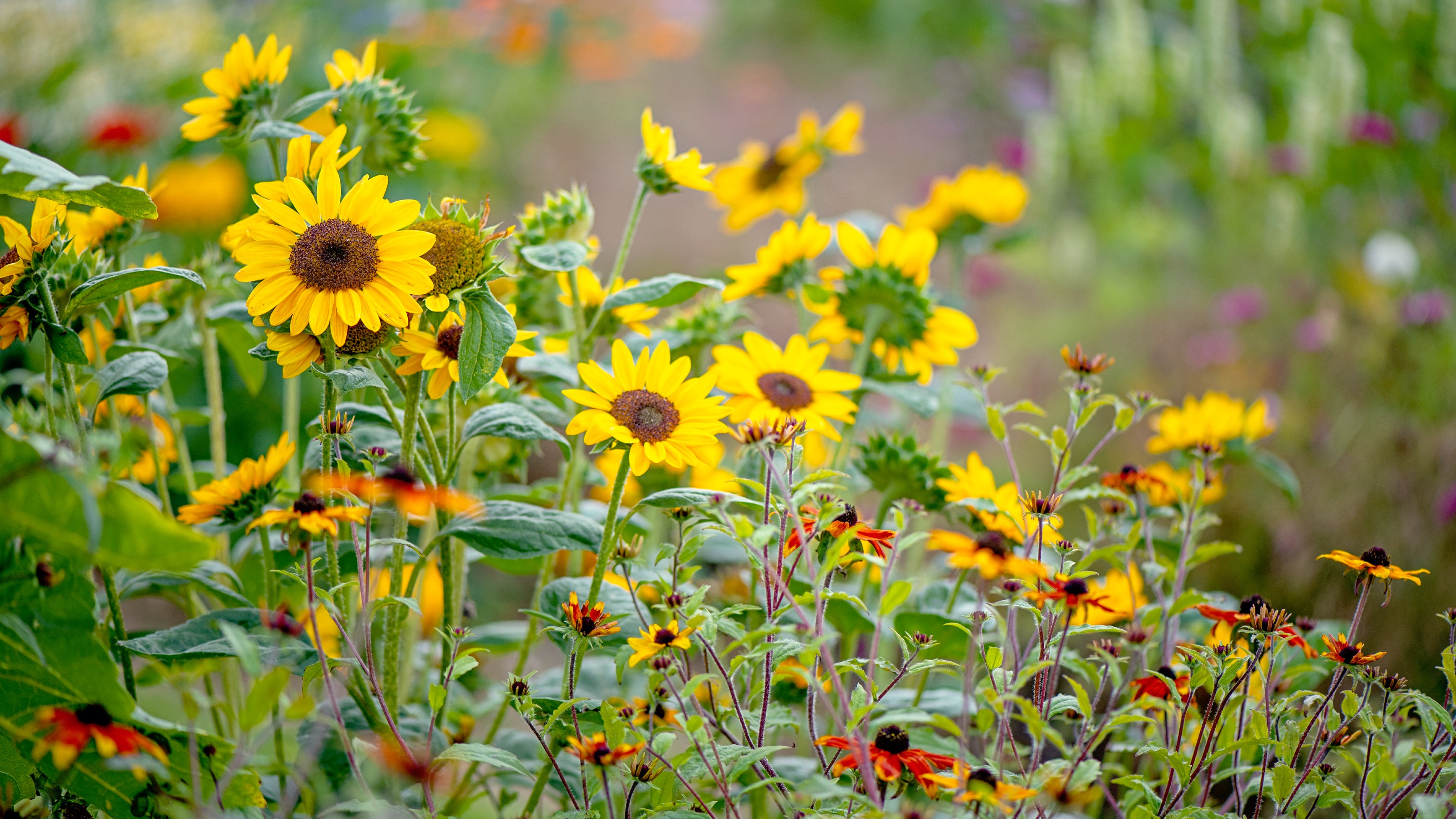

Sunflowers are the epitome of summer - bright and with blooms reminiscent of the sun itself blooming throughout the month of August. So if you’ve decided to plant some of these beautiful flowers in your garden, you might be wondering how long sunflowers take to grow.
Since we’re now in the time of year when planting sunflower seeds is recommended, it’s helpful to know how long you’ll have to wait for their sunny blooms to manifest themselves. That’s more than likely the reason you’ve planted them, after all.
And while the specific time varies depending on your chosen sunflower variety and other growing conditions, there is certainly a time frame that gardening pros all agree on so at least you have a ballpark to work with.
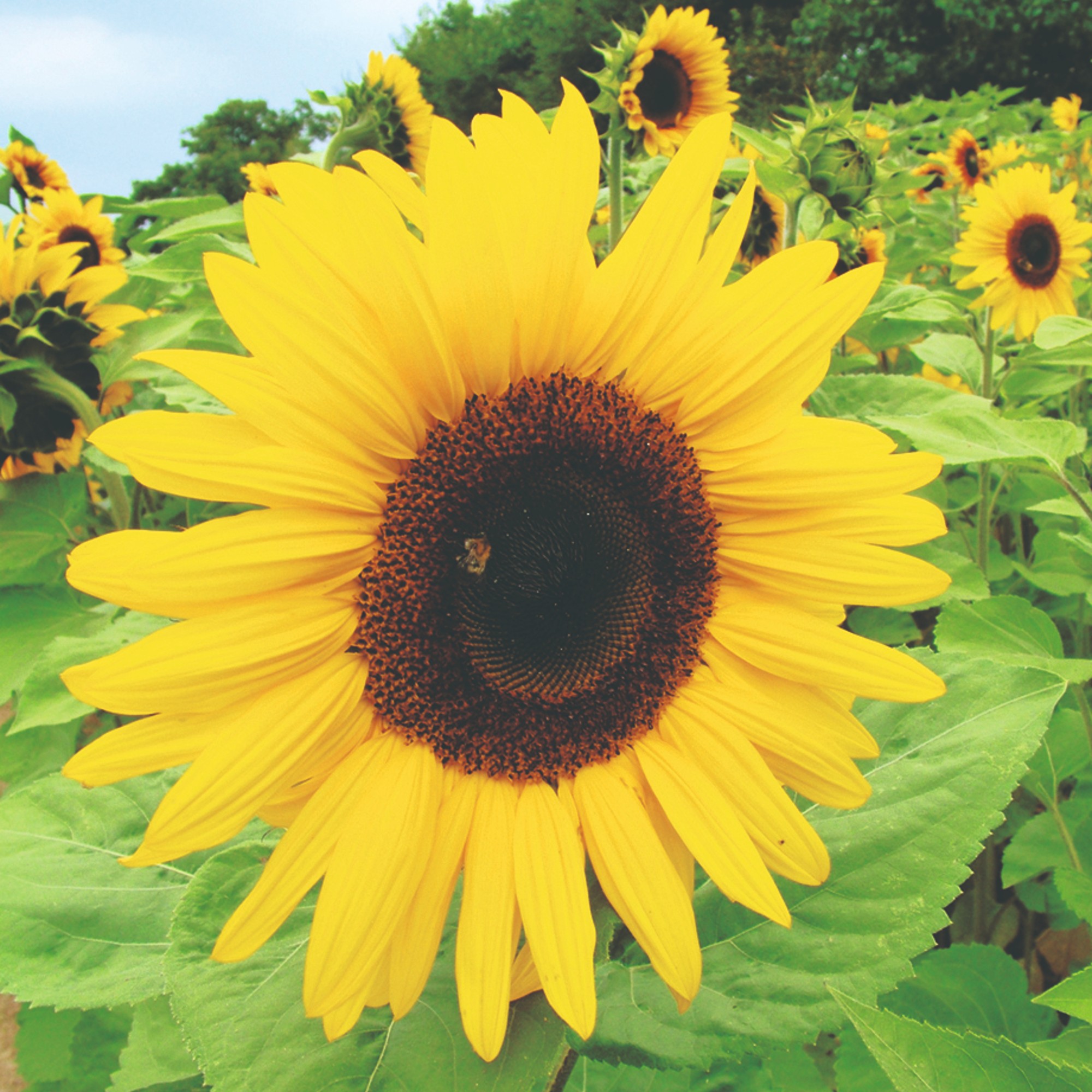
How long do sunflowers take to grow?
Unless you already have a sunflower plant or have been given a cutting and know how to propagate sunflowers, it’s likely that you’re growing your sunflowers from seeds. In fact, even if you propagate your sunflowers, you can do so from the established plant’s seeds. And in that case, the time window of growth you’re looking at is between 80 and 120 days.
‘80 to 120 days is a rough estimate for how long it'll take sunflowers to grow from being planted to blooming,’ says Steve Chilton, garden expert at LeisureBench. ‘Of course, it all depends on their growing conditions, as well as the variety of sunflowers.’
Fiona Jenkins, gardening expert at MyJobQuote.co.uk, helps to translate the days into weeks. ‘Sunflowers take between one and three weeks to germinate but once they get going, they tend to grow fast.'
'However, the total time from seed to flowering does vary between 11 and 18 weeks, depending on the variety,' Fiona continues. 'Planting your sunflowers in a sunny but sheltered spot with nutrient-rich soil helps them to grow fast.’
Get the Ideal Home Newsletter
Sign up to our newsletter for style and decor inspiration, house makeovers, project advice and more.
Of course, you then need to know what to do with a sunflower when it's finished flowering.
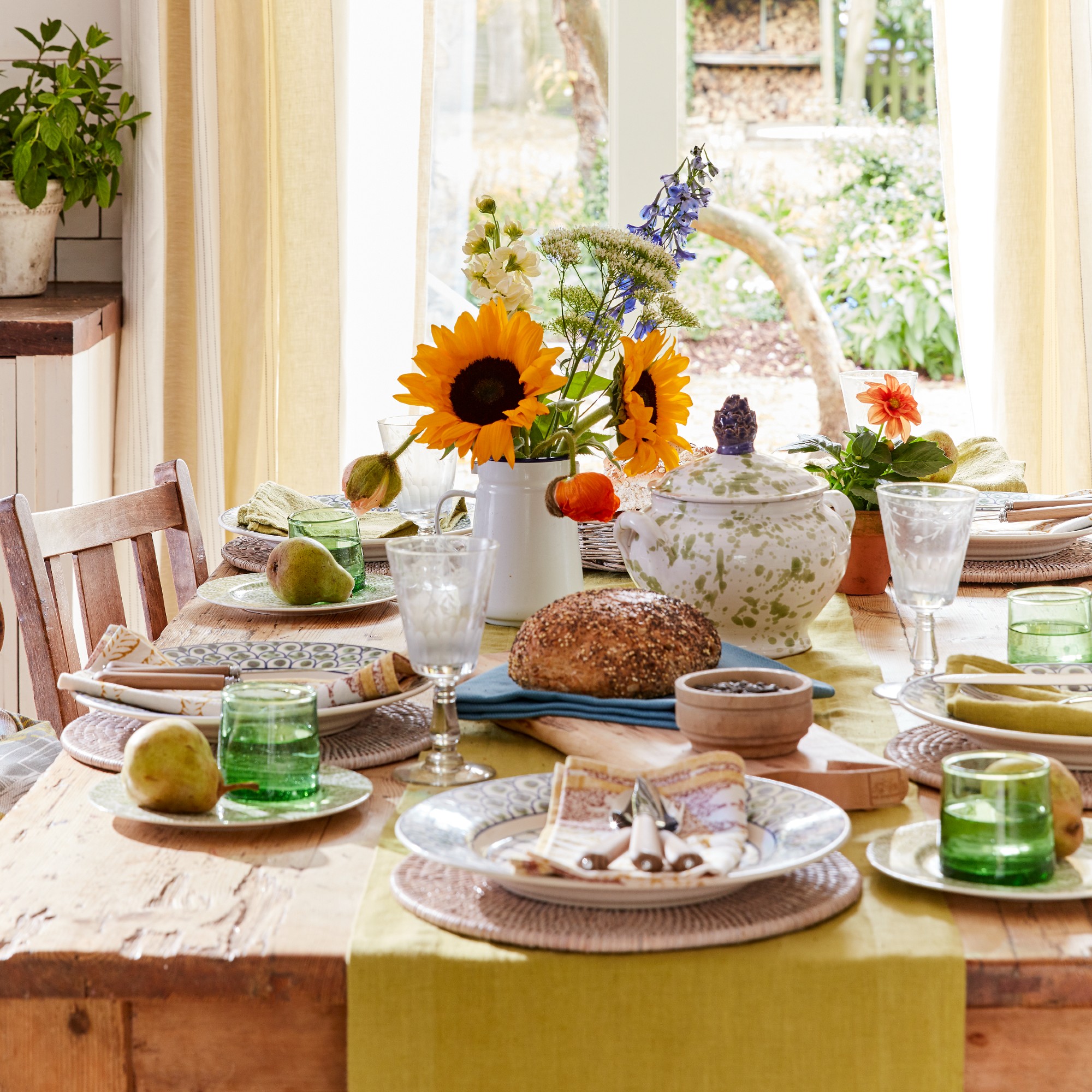

Fiona Jenkins is a UK-based landscaper with over twenty five years of experience in the industry. As a gardening expert for MyJobQuote, one of the UK's top trades-matching sites, Fiona offers her expert advice to MyJobQuote's tradespeople and homeowners, and has also been featured as a gardening expert for a range of reputable publications.
Where to buy sunflower seeds
- Amazon: Pretty Wild Seeds Super Giant Sunflower
- Dobies: Sunflower (Organic) Seeds - Medium Red Flower
- Thompson & Morgan: Sunflower 'Dwarf Yellow Spray' Seeds
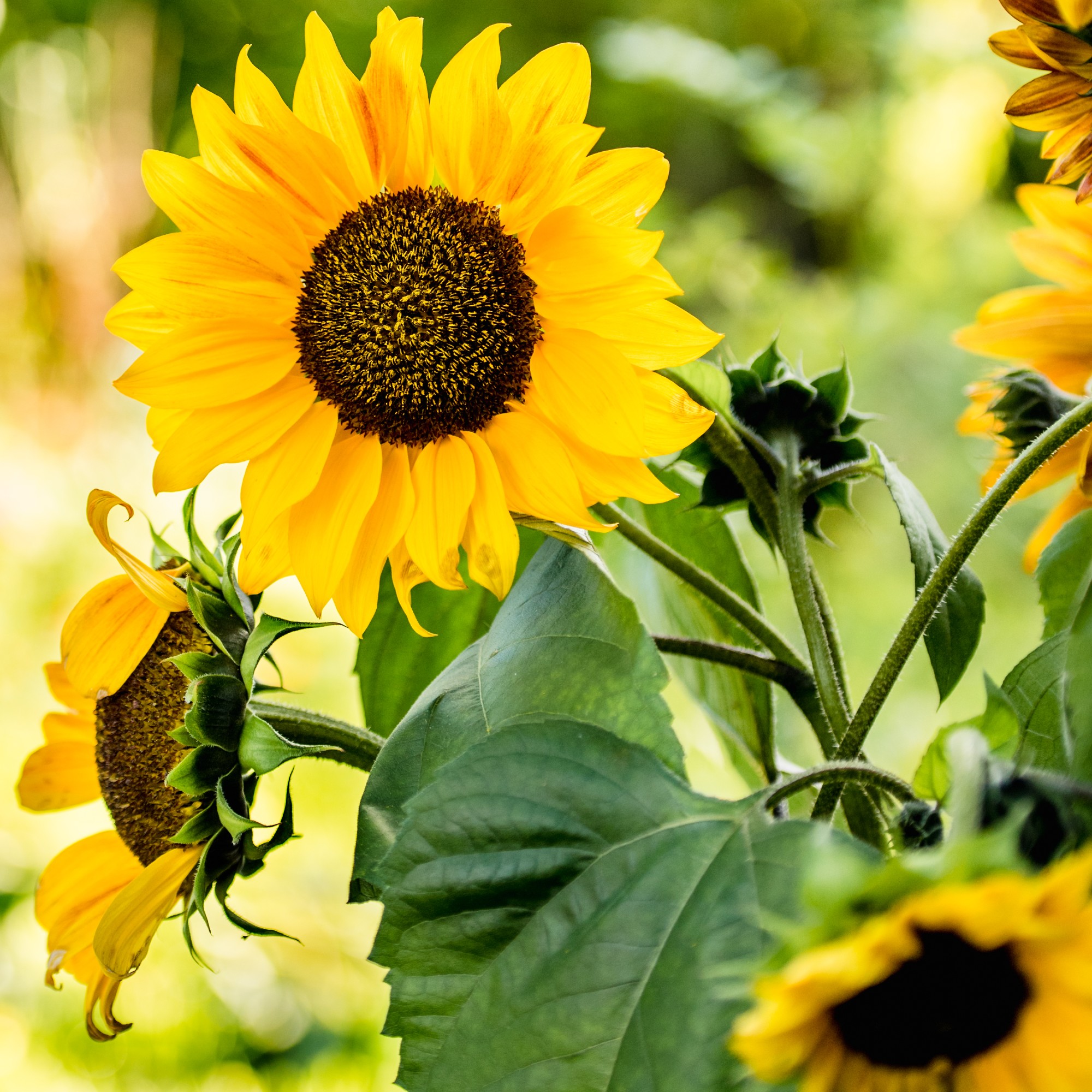
FAQs
What is the best month to plant sunflowers?
Since sunflowers bloom in the summer, it’s best to plant them in the spring so that they have enough time to grow, similarly to when you'd plant wildflower seeds.
‘Sunflower seeds are best planted between March and May, so they have time to grow before flowering in the summer. If you’re planting seeds straight into the ground, late spring to early summer is best as the ground temperatures are warmer. So, any time between late May and early June is fine,’ Fiona recommends.
Then you can look forward to seeing their beautiful blooms anytime between July and September.
‘Sunflowers typically bloom in the summer and into autumn for around eight to 12 weeks, especially if you re-sow the seeds every few weeks,’ suggests Petar Ivanov, gardening expert and plant expert at Fantastic Gadeners. ‘This way you’ll be able to have blooming sunflowers until the first frost arrives. Some sunflowers can even bloom as early as the month of July.’
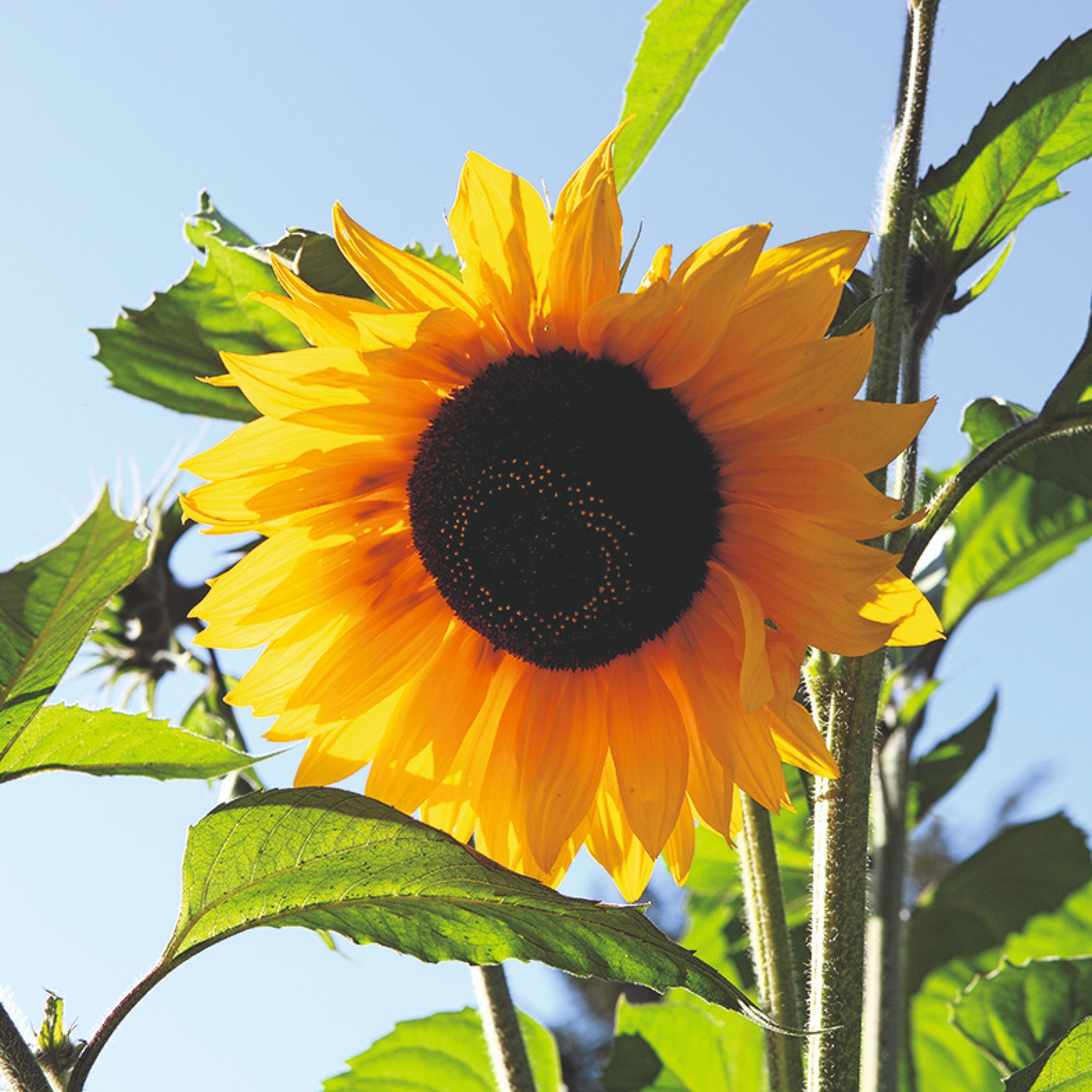
What are the five stages of a sunflower?
In order to understand how long it takes for a sunflower to grow and why, it’s helpful to be familiar with the stages of the flower’s growth.
‘The key growth stages of sunflowers are germination, where the flowers emerge and need damp soil to germinate; vegetation, or vegetative phase, where they develop the aerial part of their taproot and need a large amount of nutrients,' Petar explains.
'Then there's flower bud development, where the leaf and the root system grow almost at their maximum size, they grow high and are sensitive to water and nitrogen deficiency.'
'After that we have the flowering, where each plant flowers and the plants are very sensitive to water stress, which can impact the harvest,' continues Petar. 'And, finally, the maturing of the plant, which is the seed-filling phase and they actively synthesise fatty acids.’
Fiona adds, ‘The final stage is where the flower starts to die off and the head produces seeds – ready for the cycle to begin again.’
Happy sunflower growing!

Sara Hesikova has been a Content Editor at Ideal Home since June 2024, starting at the title as a News Writer in July 2023. She is now also the Ideal Home Certified Expert in Training on Furniture, and so far has tested 80 different sofas.
Graduating from London College of Fashion with a bachelor’s degree in fashion journalism in 2016, she got her start in niche fashion and lifestyle magazines like Glass and Alvar as a writer and editor before making the leap into interiors, working with the likes of 91 Magazine and copywriting for luxury bed linen brand Yves Delorme among others.
-
 Wood drenching is the calming new twist on the colour drenching trend – here’s how to make the look work in your home
Wood drenching is the calming new twist on the colour drenching trend – here’s how to make the look work in your homeIt’s easier than ever to embrace natural materials
By Maddie Balcombe
-
 Aldi is launching a £200 day bed with four different features - its sleek design is suited to the whole family
Aldi is launching a £200 day bed with four different features - its sleek design is suited to the whole familyYou don't want to miss out on this Specialbuy
By Kezia Reynolds
-
 How to set up a drip watering system that saves water and a lot of effort
How to set up a drip watering system that saves water and a lot of effortKeep your plants hydrated (and your water bill down) with this clever garden watering solution
By Natalie Osborn